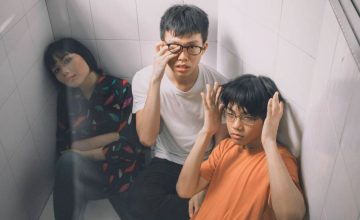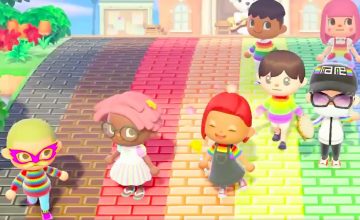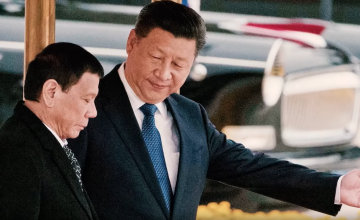While I was lounging around waiting for the new year to happen earlier this week, I got the now-infamous notification on my phone many other Filipinos did too: here were the long-awaited refunds from Grab, ordered to be handed over to the angry public by the Philippine Competition Commission (PCC).
The only problem, as we all know now, were that the refunds were laughably tiny, with most people (including myself) not even getting enough for a tangible discount on Grab’s notoriously high fares. For purposes of solidarity, I’m absolutely comfortable letting you all know that I got a total of P7 in refunds. Yes, not even P10 after thousands spent on rides last year.
…the refunds were laughably tiny, with most people (including myself) not even getting enough for a tangible discount on Grab’s notoriously high fares.
When the PCC fined Grab almost P40 million and ordered them to return P2 million back to the public, we all thought this was it for the rideshare service. They’d finally come face to face with the consequences of jacking up fares because the competition in Manila is weak. We don’t know if this meant they would finally learn their lesson, but it wouldn’t hurt anyone to hope, right?
Before all of that even happens—if it happens—though, we get this silly refunding scheme. For those who aren’t aware, here’s the computation:
- For every P1,200 spent from Feb. 10 to May 10, 2019, Grab users get P1
- For every P450 spent from May 11 to Aug. 10, 2019, Grab users get another P1
Those are sad, stiff figures that would naturally net you a minimal amount no matter how much you spend. To get even a P20 discount, you’d have to spend upwards of P15,000 from February to August, which isn’t sustainable for a lot of users. So you’re really not going to get much; it also doesn’t help that the time period doesn’t cover the holiday season, when fares were frustratingly higher and rides harder to book than usual.
Basically, you had to use it a lot to get a meaningful discount, and even if you do, it’s highly likely that your meaningful discount is only good for one ride. It doesn’t help that Grab’s fares are still pretty high, even for relatively short distances, and even for GrabShare rides. And it certainly doesn’t help that most people’s discounts, like mine, were just a handful of pesos. How far can you really go with that?
Basically, you had to use it a lot to get a meaningful discount, and even if you do, it’s highly likely that your meaningful discount is only good for one ride.
To be totally fair to Grab, I ran the quick maths and saw that we’re all supposed to get an average of less than P10. That is, if the amount that they’re supposed to return really is around P14M to P19M, divided among an average of three million users using the app equally. And then it’s weighted based on how often you personally use the service.
Read more: Booking a Grab is about to get harder this June
On paper, it all makes sense—even if it really doesn’t in practice—so where does it go wrong?
The answer seems to lie in the middlemen. If you look at the Grab/customer part of the equation, the dividends really won’t amount to much. But then you realize that the PCC is taking home around more than double the amount being refunded to us in fines and penalties.
But then you realize that the PCC is taking home around more than double the amount being refunded to us in fines and penalties.
Does that particular government agency really need that much money? Weren’t we, the people paying through the nose just to get a decent ride from points A to B, supposed to get our money back? What use does it really have for P39 million? Wouldn’t the government have scored a much-needed goodwill PR win if they kept the smaller part of the split—and thereby forcing Grab to fix that silly formula they had?
Read more: Dealing with the nation’s pressing problems? Local gov’t tells citizens to DIY
Here then, is where you can see how everyone’s failing us by not only providing a reliable means of public transportation, but also still shortchanging us when we need that help the most. I’m not about to call anyone corrupt (yet), but it certainly is suspect how the PCC’s policy and subsequent directive isn’t exactly citizen-friendly. The PCC is out here to promote fair competition, but when they penalize corporations, shouldn’t the cheese be going back to the public they’re serving? While that becomes a question of the agency’s mandate, it’s definitely something to think about a little more.
The PCC is out here to promote fair competition, but when they penalize corporations, shouldn’t the cheese be going back to the public they’re serving?
Meanwhile, it doesn’t help that Grab isn’t doing much to promote goodwill among an already pissed-off public. I can’t believe they didn’t expect backlash over pennies. One would think they’d at least try to present themselves as a little more caring and concerned for the people who are mad, but nope. Grab Philippines president Brian Cu just tries to rationalize the sad little formula, like that’s going to make anyone feel better.
But then again, I doubt they’d care—they know they’ve got a lot of us still here, right where they need us and right where we need them to be. Angkas and the whole concept of motorcycle taxis are in uncertain waters right now, competing car-based rideshare services aren’t doing enough to present themselves as popular alternatives, and many taxi drivers are still assholes.
I doubt they’d care—they know they’ve got a lot of us still here, right where they need us and right where we need them to be.
TL;DR: we’re still fucked in Metro Manila, and we’re not going to be any less fucked in 2020. It’s all one big joke to the people with power and money until someone with large reserves of political will—or a group of those someones—decides to do something.
























Comments